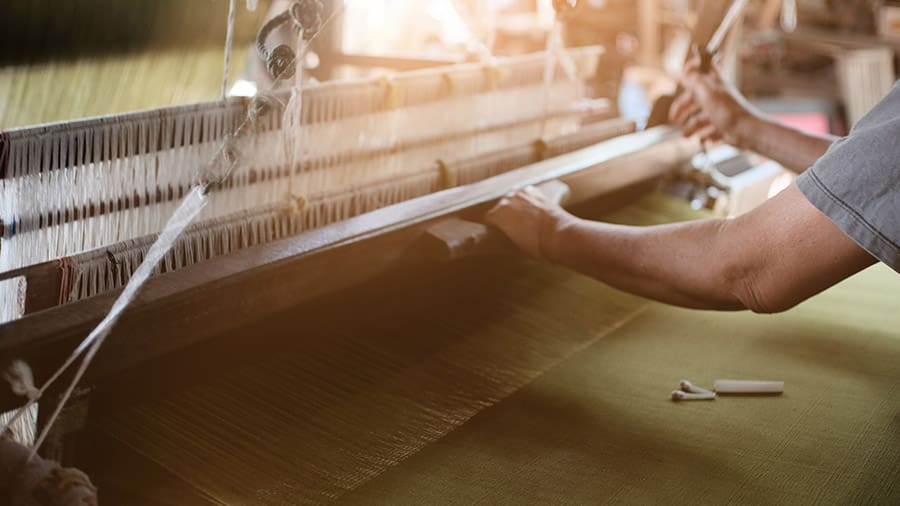India’s textiles sector is driven by the country’s abundant availability of raw materials and labor, with the market size standing at US$140.4 billion in 2020, and expected to grow to US$223 billion by 2021.
The sector is currently in need of foreign investments as it shifts its focus to the production of handloom fabrics, man-made fibers, and technical textiles.
To attract foreign investors, the government of India has ensured that 100 percent FDI is allowed in the textiles sector without needing any government approval, that is, under the automatic route. Various schemes have been introduced to further develop the industrial ecosystem, including industrial parks, skills development, and production-linked incentives.
GST rate made uniform for MMF textiles value chain
In a recent move, the textile ministry announced it is removing the inverted duty structure in the man-made fiber (MMF) sector and will levy a uniform goods and services tax (GST) at 12 percent on MMF yarn, fabrics, and apparel from January 1, 2022. The existing GST rates on MMF, MMF yarn, and MMF fabrics are 18 percent, 12 percent, and five percent, respectively. According to the government, “taxation of inputs at higher rates than finished products created a build-up of credits and cascading costs. It further led to the accumulation of taxes at various stages of MMF value chain and blockage of crucial working capital for the industry.”
UPDATE: The GST Council on December 31, 2021, has deferred hiking the GST on textiles from 5% to 12%.
The matter will be reviewed in the next GST Council meeting. The move to establish a uniform GST levy was heavily opposed by industry bodies and state governments, with critics citing the overwhelming pain it would cause MSME players in the textiles industry besides raising costs to the final consumer. Changes to the GST computation would also impose compliance costs on the unorganized sector and impact the livelihood of small manufacturers and artisans, among others.
Industry overview and investment climate
India’s textiles sector is highly diversified, producing several products, ranging from traditional handlooms to the production of man-made fibers, such as filament yarn. An important sub-segment of this sector is the organized textile industry, which is known for its use of capital-intensive technology, for the creation of those textile products that involve spinning, weaving, and processing, as well as garments, manufacturing. Besides this, India is also the largest producer of cotton and jute in the world.
The following lists India’s state-wise textile exporting special economic zones (SEZs):
- Brandix India Apparel City Private Ltd. – Visakhapatnam, Andhra Pradesh
- Mas Fabric Park Pvt. Ltd. – Nellore, Andhra Pradesh
- Ksidb SEZ Kannur – Kerala
- Ig3 Infra Ltd – Uthukuli, Tamil Nadu
In addition, foreign investors should note the appealing investment climate that the textiles sector offers. It benefits from an organized retail landscape, a large and growing consumer market, direct employment of 45 million persons, the presence of an entire value chain from raw material sourcing to fabric to garment production, and an increasing focus on the production of technical textiles.
In the period between April 2000 to December 2020, India’s textiles sector received FDI worth US$3.68 billion. By March 2021, FDI into textiles and apparel reached US$3.75 billion. Japan, Mauritius, Italy, and Belgium were some of the top contributors to FDI in India’s textile sector (including dyed, printed textiles) in the period from April 2016 to March 2021.

